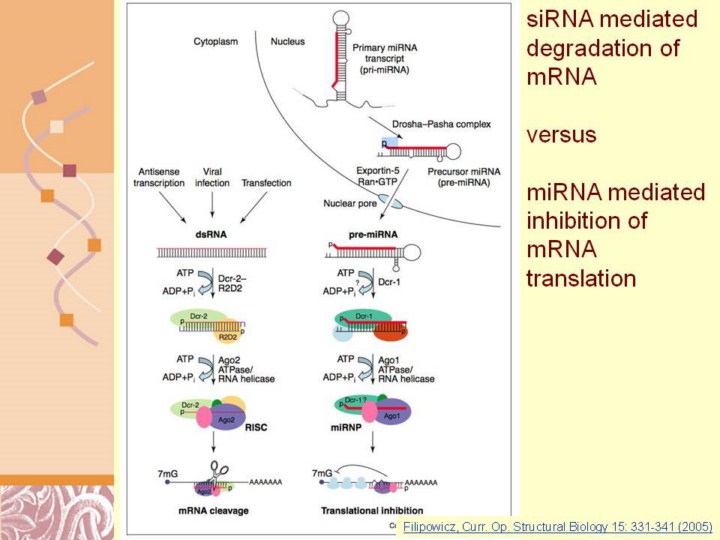| front |1 |2 |3 |4 |5 |6 |7 |8 |9 |10 |11 |12 |13 |14 |15 |16 |17 |18 |19 |20 |21 |22 |23 |24 |25 |26 |27 |28 |29 |30 |31 |32 |33 |34 |35 |36 |37 |38 |39 |40 |41 |42 |43 |44 |45 |review |
 |
Filipowicz, Curr. Op. Structural Biology 15: 331-341 (2005)
miRNA biogenesis and post-transcriptional gene regulation by miRNAs and siRNAs. The pathway shown is primarily based on data from Drosophila, although processing and assembly steps in mammalian cells are similar. Pri-miRNAs frequently contain more than one pre-miRNA hairpin. The Dcr-2–R2D2 complex recognizes the thermodynamic asymmetry of siRNA, with Dcr-2 binding to the less stable end of the duplex, near the 50 end of the selected guide strand. Rules of miRNA strand selection are similar, but details of the proteins involved are not known. Although not absolutely required, Dcr-1 also plays a role in siRNA-dependent RNAi [20]. In mammals, a single Dicer participates in RNAi and miRNA pathways, but whether the protein is part of the mature RISC/miRNP is not yet established. Drosophila Ago1 and Ago2 function in miRNA and RNAi reactions, respectively. In mammals, all four Ago proteins, Ago1–4, seem to function in translational repression, but only Ago2 is a component of the cleavage-competent RISC. |